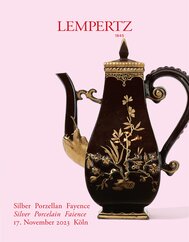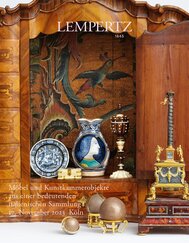Auction 1230 - Highlights in Two Catalogues
On 17th November, Lempertz will auction outstanding items with desired provenances from across the centuries. The morning is dedicated to silver, porcelain and faience, and the afternoon is devoted to ‘Kunstkammer’ items, including objets de vertu, sculpture, furniture and many other treasures.
Silver
The extraordinarily extensive silver offer unites high quality objects from five centuries. The highlights include a museum-quality Renaissance lidded tankard by the Augsburg Master Hans Reiser, from around 1560. The body of the tankard is decorated with depictions of the goddesses Venus, Diana and Pallas Athena after engravings by Virgil Solis (lot 1000, estimate € 70/80,000).
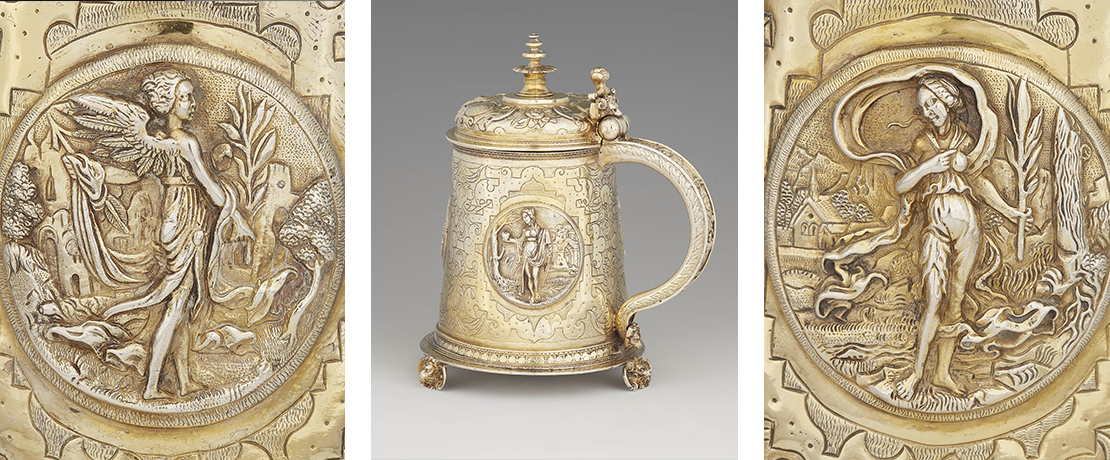
The large gilt council cup of the market court of Pyrbaum in the Upper Palatine bears the engraved coat of arms of the town of Pyrbaum as well as those of the barons of Wolfstein, once one of the most important Upper Palatine names, and features a list of the Pyrbaum judges, chamberlains and aldermen etched on the inside of the lid. Formerly in the Bulgari Collection, the goblet was created in the 1660s in the Nuremberg workshop of Reinhold Rühl (lot 1010, estimate € 40/50,000).
A display plaque, made in around 1680 by the Augsburg relief specialist Heinrich Mannlich and of monumental proportions with a diameter of nearly 70 cm, shows the multi-figured depiction of Belshazzar’s banquet between allegories of pleasure and idleness (lot 1011, estimate € 25/30,000). Similar works by the master can be found today in important collections such as the Imperial Treasury in Vienna and the Moscow Kremlin Museum.

A large part of the Kunstkammer selection in the afternoon catalogue is made up of an Italian collection which also contains interesting silver objects. Among these is a large holy water font by the Roman Master Antonio Politi, made in around 1730 in the most splendid Baroque style (lot 1039, € 13/15,000).
Porcelain
One high point in the porcelain offer is held by the extremely rare early Meissen Böttger stoneware coffee pot with the notably well-preserved lacquer decoration by Martin Schnell, dated between 1710 and 1715 (lot 1320, estimate € 30/40,000). A Meissen lidded terrine with a finial of cauliflower, asparagus and peas (lot 1377, estimate €14/16,000) is from the dinner service made for Heinrich Graf Brühl, whilst an impressive, museum-quality pilgrim couple was modelled and formed by Johann Joachim Kaendler in 1741 (lot 1381, estimate € 25/30,000).
A tea and coffee service for two (tête à tête) by the Electoral Mainz manufactory of Höchst was decorated by the renowned porcelain painter Andreas Philipp Oettner (circa 1735 - 92). He was one of the few porcelain painters with such a clearly individual style and subjects that pieces by his hand are easily recognisable. Among other things, he specialised in ‘Watteau scenes’ in which he replaced the figures with child-like people with very specific facial expressions (lot 1404, € 15/20,000).
Also offered for auction is a rare painting on Viennese porcelain, signed by Joseph Nigg (lot 1446, estimate € 15/20,000), acquired many years ago from Röbbig in Munich.
Further porcelains are from a Westphalian private collection, from the collection of Gisela Eustergerling, as well as the second part of the faience group from the collection of Dr Jürgen Baur. Over the course of five decades, the Cologne collector has built up one of the largest collections of faience in the Rhineland, with a focus on works from the Silesian Proskau manufactory, now Prószków in Poland.
Kunstkammer objects
The auction of Kunstkammer objects follows in the afternoon
The first lot in the second catalogue is already spectacular: An early Italian majolica jug, a boccale, Emilia Romagna, formerly of the collection of Prince Luitpold of Bavaria, and published by Rackham in 1959 (lot 1600, estimate € 10/15,000). Three highly important pieces of Limoges with painterly enamel en grisaille follow – of which only the jug with the biblical motif of ‘Moses and the brazen serpent’, attributed to Pierre Reymond, can be mentioned here (lot 1610, estimate € 45/50,000). The impressive ivory and burl wood Scandinavian goblet made for a ‘Kunstkammer’ (lot 1614, estimate € 40/50,000) has of course been granted a sales permit - as is the case for all the ivories offered for sale - and allows the objects to circulate within the EU. The goblet formerly belonged to the Lily & Edmond J Safra Collection and was auctioned in New York in 2011.
The Italian collection, specially denoted in the catalogue, includes numerous important and exceptional objects. Three bezoars with finely crafted mounts of silver or gilt bronze (lots 1624 – 1626, estimate € 6/10,000 each), bear witness to the enthusiasm of the European nobility for such Kunstkammer objects. In the 17th century, Jesuit priests in Goa in the West Indies specialised in these items, creating synthetic bezoars out of gallstones and hair, which they exported to Europe in ornate containers.
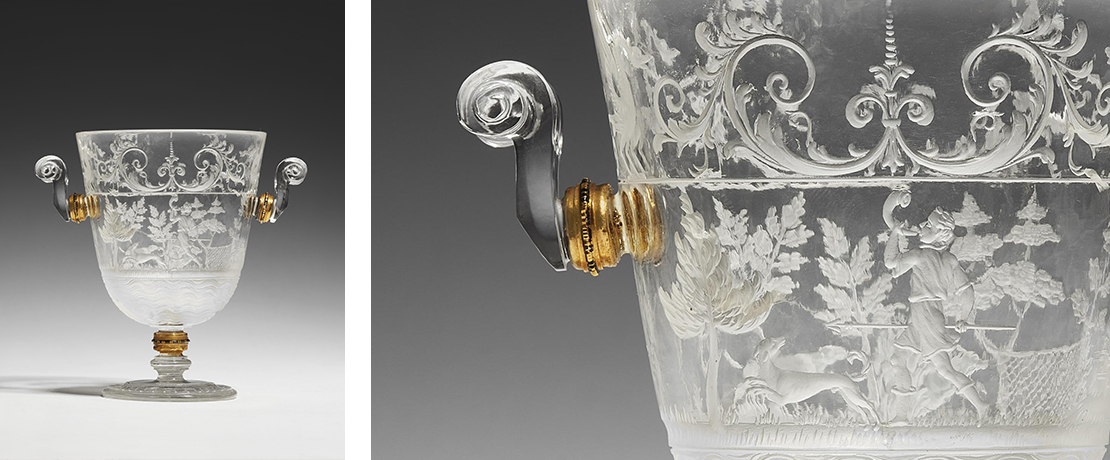
A rock crystal goblet is attributed to a Milanese stone carver of the 17th century (lot 1645, estimate € 30/50,000), with deep cut, fine decoration of hunting and mythological scenes. A likewise museum-quality Augsburg column clock by David Buschmann, circa 1660 - 64 (lot 1670), is valued at € 50/60,000. The double hour indication, which here winds around the column as a small plying putto and is displayed at the top of the column, is considered an invention of Buschmann.
The finest micromosaic pictures are also from the Italian collection: A view of the Tivoli waterfall, possibly after a motif by Hackert, is presumed to be from the studio of Giacomo Raffaelli (lot 1726, estimate € 50/60,000), the inventor of the micromosaic technique and its most famous representative. A second micromosaic depicts the Engelsburg and the Vatican at sunset (lot 1727, estimate € 30/40,000), probably after a painting by Ippolito Caffi (1809 - 1866). The coat of arms to the frame indicates an order of Pope Pius IX who was appointed to office in 1846.
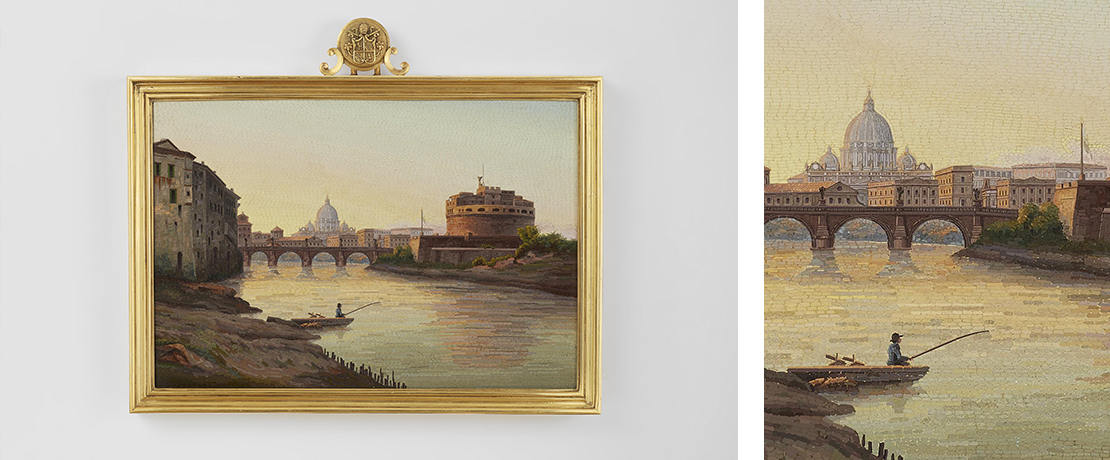
The highest valued lot in the auction is the large sculptural table clock in a solid silver chased case depicting Atlas with the celestial globe by Alexis Falize of Paris, circa 1860 (lot 1733, estimate € 110/130,000). Falize was the founder of one of the most important Parisian studios for goldsmith’s work and high-quality jewellery. The motif of this impressive table clock is from the Roman marble atlas excavated in 1556, which is now in the collection of the Museo Archeologico Nazionale in Naples.
Auction Dates
Auction 1230 - Silver, Porcelain, Faience
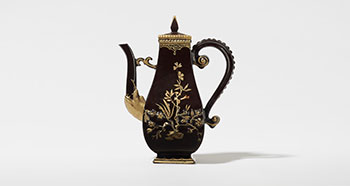
Auction
Friday 17 Nov
10 am
Lot 1000 – 1585
5.30 pm approximately
Lot 1600 – 1772
Preview
Vernissage Thursday, 9 Nov, 6 pm
Friday, 10 Nov, 10 am - 5.30 pm
Saturday, 11 Nov, 10 am - 4 pm, by appointment only
Sunday, 12 Nov, 11 am - 4 pm
Monday, 13 Nov - Wednesday, 15 Nov, 10 am - 5.30 pm
In selection
Munich, St. Anna-Platz 3
Monday, 6 Nov and Tuesday, 7 Nov, 10 am - 5 pm
Auction 1230 - Furniture and objects from the Kunstkammer
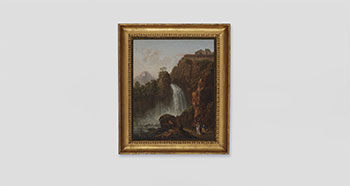
Auction
Friday 17 Nov
10 am
Lot 1000 – 1585
5.30 pm approximately
Lot 1600 – 1772
Preview
Vernissage Thursday, 9 Nov, 6 pm
Friday, 10 Nov, 10 am - 5.30 pm
Saturday, 11 Nov, 10 am - 4 pm, by appointment only
Sunday, 12 Nov, 11 am - 4 pm
Monday, 13 Nov - Wednesday, 15 Nov, 10 am - 5.30 pm
In selection
Munich, St. Anna-Platz 3
Monday, 6 Nov and Tuesday, 7 Nov, 10 am - 5 pm
If you have any questions, please do not hesitate to contact us at 0221/92 57 29–57.
Contact
Jan Bykowski
Press and public relations
info@lempertz.com

